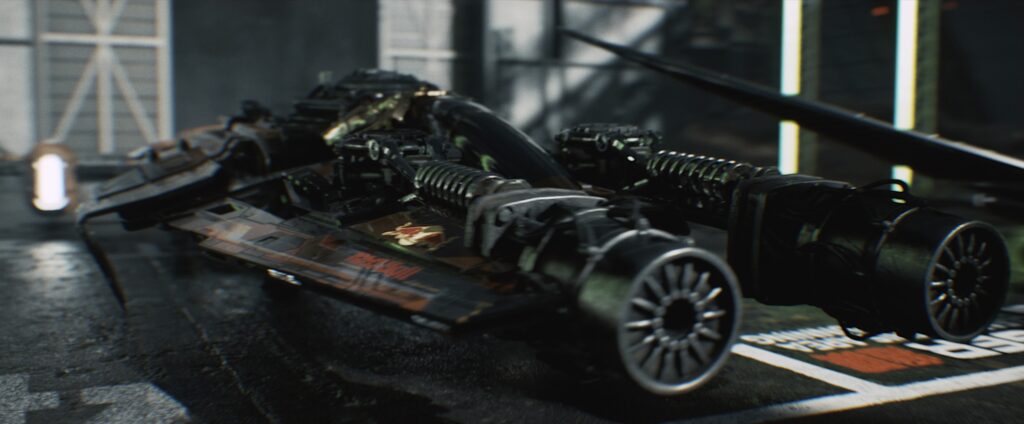
The Cloud Racer is an incredible new short film from Impossible Objects that showcases the possibilities of what small teams can achieve using next generation creative tools and real time pipelines. For the Impossible Objects team, the project came to fruition as result of a devotion to developing narrative passion projects in between commercial projects and virtual production pipeline building.
A struggling outerling pilots his race-craft over the apocalyptic streets of future Los Angeles in a fierce aerial competition against the much better funded corporate teams in The Cloud Racer, a short film by Impossible Objects. Inspired by the likes of race films such as Rush, Ford v. Ferrari, outcast dreamer films such as October Sky, and imaginative escapist films such as Star Wars and The Hunger Games, The Cloud Racer is a proof-of-concept for a full-length original feature film.
“Our goal has always been to manifest original ideas independently using innovative and emerging new world building tools. Unreal Engine, MetaHuman Creator and KitBash3D are making it possible to visualize ambitious concepts at such a democratized level. The idea for Cloud Racer spawned from a mutual love for the jaw-dropping pod racing sequence that premiered in Star Wars just over twenty years ago, and how special it was to see a race film set in a science-fiction fantasy landscape on the big screen. We wanted to capture the essence of this sequence and develop it into a story of a father and son taking on the daunting world around them and proving that the little guy has a spot in the race too,” said Impossible Objects co-founder and director of the film Joe Sill.
The team heavily relied on Unreal Engine to create everything from virtual environments to lighting, camera, ingesting mocap performances, and final cinematics in-engine. The digital characters were built using Epic Games’ MetaHuman Creator, an innovative new platform to create pre-rigged digital human characters at astonishing speed that are infinitely customizable and fully operable within minutes.
To get up to speed with the workflow, the team conducted an experimental mocap shoot where they learned how to use motion and facial capture.
“We shot our talent across one week in our office, where we used Rokoko SmartSuits, Standard Deviation FaceCam HMC’s, and Unreal Engine’s LiveLink app to capture all of our facial and body performances — much of which was used in the final film. All the performances you see in the final film are the result of a live capture session and tweaks using Epic’s MetaHuman Control Rig. We also used Vanishing Point & 39 Vector system to do some referential camera work to simulate how we might end up filming the characters later on after ingesting all the performances into the scene,” said virtual production supervisor and technology head Luc Delamare.
The bulk of the challenges the team faced during production were with the performance capture pipeline.
“We had to figure out how to efficiently capture data, organise it, edit it, and push it through the Unreal Engine with Metahumans. We were proud to build a system that was synchronised and intuitive within Unreal Engine, so that we could in essence ‘edit’ the film with performances recorded directly into Unreal,” said Delamare.
Impossible Objects built the film’s environments and art direction by heavily utilizing assets provided by Kitbash3D, Quixel, and big/medium/small.
“Companies like Kitbash3D are providing infinite possibilities for artists to stand up massive, detailed environments within an extremely short amount of time, allowing small teams to develop and realize completely fictitious, and previously restrictive big visual ideas, and really played a crucial role in the realization of the worlds of The Cloud Racer,” said Sill.
The Cloud Racer released through ‘Short of the Week’ on Monday, 15 August and proves that with the right combination of artistry, technical ingenuity and embracing next generation production tools, small independent teams can produce projects that meet or exceed the quality of much larger and more well-established studios.
